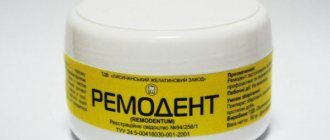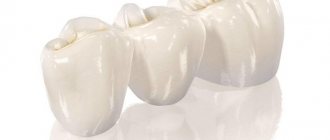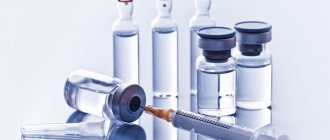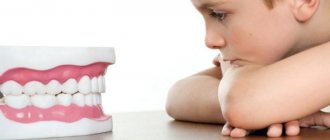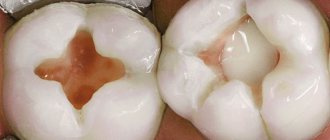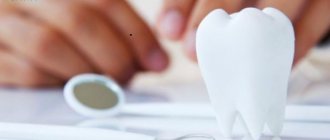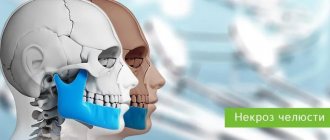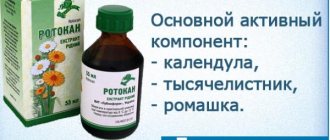CLASSIFICATION
Odontogenic infections (infections of the oral cavity), depending on the anatomical location, are divided into truly odontogenic
associated with damage to tooth tissue (caries, pulpitis);
periodontal
, associated with damage to the periodontium (periodontitis) and gums (gingivitis, pericoronitis), surrounding tissues (periosteum, bone, soft tissues of the face and neck, maxillary sinus, lymph nodes);
non-odontogenic
, associated with damage to the mucous membranes (stomatitis) and inflammation of the major salivary glands.
These types of infections can cause serious life-threatening complications from the cranial cavity, retropharyngeal, mediastinal and other localizations, as well as hematogenously disseminated lesions of the heart valve apparatus, sepsis.
Purulent infection of the face and neck
may be of non-odontogenic origin and includes folliculitis, furuncle, carbuncle, lymphadenitis, erysipelas, hematogenous osteomyelitis of the jaws.
Specific infections (actinomycosis, tuberculosis, syphilis, HIV) can also be observed in the maxillofacial area.
MAIN PATIENTS
Infections of the oral cavity are associated with the microflora that is constantly present here. Usually this is a mixed flora, including more than 3-5 microorganisms.
With truly odontogenic
infections, along with facultative bacteria, primarily viridans streptococci, in particular (
S.mutans, S.milleri
), anaerobic flora is released:
Peptostreptococcus
spp.,
Fusobacterium
spp.,
Actinomyces
spp.
In case of periodontal infection, five main pathogens are most often isolated: P.gingivalis, P.intermedia, E.corrodens, F.nucleatum, A.actinomycetemcomitans
, less commonly
Capnocytophaga
spp.
Depending on the location and severity of the infection, the patient’s age and concomitant pathology, changes in the microbial spectrum of pathogens are possible. Thus, severe purulent lesions are associated with facultative gram-negative flora ( Enterobacteriaceae
spp.) and
S.aureus
.
In elderly patients and hospitalized patients, Enterobacteriaceae
spp also predominate.
In the conditions of domestic bacteriological laboratories, it is quite difficult to isolate a specific pathogen of a certain odontogenic infection. However, it seems possible to localize pathogens that play a major role in the development of oral infections in supragingival and subgingival plaque.
PRINCIPLES OF TREATMENT OF INFECTIONS OF THE ORAL CAVITY AND MAXILLOFACIAL AREA
Treatment of odontogenic infection
often limited to local therapy, including standard dental procedures.
Systemic antibacterial therapy is carried out only when odontogenic infection spreads beyond the periodontal period (under the periosteum, into the bones, soft tissues of the face and neck), in the presence of elevated body temperature, regional lymphadenitis, and intoxication.
When choosing antimicrobial therapy in a hospital setting, in cases of severe purulent infection, it is necessary to take into account the possibility of the presence of resistant strains among anaerobes such as Prevotella
spp.,
F. nucleatum
to penicillin, which determines the prescription of broad-spectrum drugs, amoxicillin/clavulanate in monotherapy or a combination of fluoroquinolone with metronidazole.
Due to increasing levels of resistance by Streptococcus
spp.
to tetracycline and erythromycin, these drugs can only be used as alternatives. Since metronidazole has moderate activity against anaerobic cocci ( Peptostreptococcus
spp.), simultaneous administration of β-lactam antibiotics is necessary to increase effectiveness.
Preventive systemic use of AMPs when performing dental procedures in the oral cavity or periodontium does not guarantee a reduction in the incidence of infectious complications in somatically healthy patients. Convincing data on the sufficient effectiveness of topical antibiotics for oral infections have not been obtained. At the same time, oral bacteria are a reservoir of determinants of resistance to AMPs. Excessive and unjustified use of antibiotics contributes to their appearance and the development of resistance of pathogenic microflora.
ODONTOGENIC AND PERIODONTAL INFECTION
PULPITIS
Main pathogens
Viridans streptococci ( S. milleri
), non-spore-forming anaerobes:
Peptococcus
spp.,
Peptostreptococcus
spp.,
Actinomyces
spp.
Choice of antimicrobials
Antimicrobial therapy is indicated only in case of insufficient effectiveness of dental procedures or spread of infection into surrounding tissues (periodontal, periosteal, etc.).
Drugs of choice
: phenoxymethylpenicillin or penicillin (depending on the severity of the disease).
Alternative drugs
: aminopenicillins (amoxicillin, ampicillin), inhibitor-protected penicillins, cefaclor, clindamycin, erythromycin + metronidazole.
Duration of use
: depending on the severity of the current (at least 5 days).
PERIODONTITIS
Main pathogens
Microflora is rarely detected in the periodontal structure and is usually S.sanguis, S.oralis, Actinomyces
spp.
In periodontitis in adults, gram-negative anaerobes and spirochetes predominate. P.gingivalis, B.forsythus, A.actinomycetemcomitans and T.denticola
are highlighted most often.
In juveniles, there is rapid involvement of bone tissue in the process, with A. actinomycetemcomitans
and
Capnocytophaga
spp.
P.gingivalis
is rarely isolated.
In patients with leukemia and neutropenia after chemotherapy along with A. actinomycetemcomitans
C.micros
is isolated , and in prepubertal age -
Fusobacterium
spp.
Choice of antimicrobials
Drugs of choice
: doxycycline; amoxicillin/clavulanate.
Alternative drugs
: spiramycin + metronidazole, cefuroxime axetil, cefaclor + metronidazole.
Duration of therapy
: 5-7 days.
For patients with leukemia or neutropenia after chemotherapy, cefoperazone/sulbactam + aminoglycosides are used; piperacillin/tazobactam or ticarcillin/clavulanate + aminoglycosides; imipenem, meropenem.
Duration of therapy
: depending on the severity of the course, but not less than 10-14 days.
PERIOSTITIS AND OSTEOMYELITIS OF THE JAWS
Main pathogens
With the development of odontogenic periostitis and osteomyelitis, S. aureus
, as well as
Streptococcus
spp., and, as a rule, anaerobic flora prevails:
P.niger, Peptostreptococcus
spp.,
Bacteroides
spp.
Specific pathogens are less commonly identified: A.israelii, T.pallidum
.
Traumatic osteomyelitis is often caused by the presence of S.aureus
, as well as
Enterobacteriaceae
spp.,
P.aeruginosa
.
Choice of antimicrobials
Drugs of choice
: oxacillin, cefazolin, inhibitor-protected penicillins.
Alternative drugs
: lincosamides, cefuroxime.
When P.aeruginosa
, antipseudomonas drugs (ceftazidime, fluoroquinolones) are used.
Duration of therapy
: at least 4 weeks.
ODONTOGENIC MAXILLARY SINUSITIS
Main pathogens
The causative agents of odontogenic maxillary sinusitis are: non-spore-forming anaerobes - Peptostreptococcus
spp.,
Bacteroides
spp., as well as
H.influenzae, S.pneumoniae
, less often
S.intermedius, M.catarrhalis, S.pyogenes
.
Isolation of S.aureus
from the sinus is characteristic of nosocomial sinusitis.
Choice of antimicrobials
Drugs of choice
: amoxicillin/clavulanate. For nosocomial infection - vancomycin.
Alternative drugs
: cefuroxime axetil, co-trimoxazole, ciprofloxacin, chloramphenicol.
Duration of therapy
: 10 days.
Gum diseases
Pulpitis
Pulpitis is an inflammatory disease of the soft tissues of the tooth, of an infectious nature, which is the most common consequence of untimely or poor-quality treatment of carious lesions, characterized by acute pain and a sharp reaction to temperature stimuli.
Pulpitis is not so much an independent disease as a consequence of improper treatment of dental diseases or lack of treatment as such. The mechanism of development of the disease is simple: in the presence of carious lesions left unattended, the destruction of hard tooth tissues can reach the root pulp, as a result of which microorganisms and their metabolic products begin to penetrate into the vascular bundle located in the center of the tooth. The ingress of pathogenic agents is accompanied by a response accompanied by acute pain, a sharp, time-long reaction to cold or hot - this is inflammation. In addition to caries, pulpitis can be caused by tooth trauma - loss of part of the tooth or crown, fracture, crack.
Symptoms of pulpitis are varied and depend on the form of the disease. There are acute and chronic forms of the disease. Acute pulpitis is characterized by periodically occurring pain in the tooth, occurring suddenly and disappearing on its own. Most often, pain occurs in the evening and at night. At the initial stages of the development of the disease, pulpitis may not bother the patient much, but over time, attacks of pain become more frequent and intensified, the pain becomes pulsating in nature and is expressed with greater intensity. Sometimes the pain radiates to the jaw, ear, or nearby areas, which can cause a migraine or headache attack. Subsequently, the pain becomes unbearable, excruciating and cannot be relieved with painkillers.
Chronic pulpitis manifests itself somewhat differently. This disease in its chronic form makes itself felt with any thermal changes - painful sensations occur when the temperature changes, for example, when moving from a cold room to a warm one and vice versa, eating very cold or very hot. As the thermal factor is eliminated, the pain gradually subsides. Spontaneously occurring causeless pain is not typical for chronic pulpitis.
Treatment of pulpitis involves removing the pulp and installing a filling on the damaged tooth. If pulpitis is not treated, a number of complications and consequences may develop. The most common include: periodontitis, periostitis; osteomyelitis, etc.
PURULENT INFECTION OF SOFT TISSUE OF THE FACE AND NECK
Main pathogens
Purulent odontogenic infection of the soft tissues of the face and neck, tissue of deep fascial spaces is associated with the release of polymicrobial flora: F. nucleatum
, pigmented
Bacteroides, Peptostreptococcus
spp.,
Actinomyces
spp.,
Streptococcus
spp.
ABSCESSES, PHLEGMONS OF THE FACE AND NECK
Main pathogens
With an abscess in the orbital area in adults, a mixed flora is released: Peptostreptococcus
spp.,
Bacteroides
spp.,
Enterobacteriaceae
spp.,
Veillonella
spp.,
Streptococcus
spp.,
Staphylococcus
spp.,
Eikenella
Streptococcus
spp.,
Staphylococcus
. predominate in children .
The causative agents of abscesses and phlegmon of non-odontogenic origin, most often caused by minor skin lesions, are S.aureus, S.pyogenes
.
With putrefactive-necrotic phlegmon of the floor of the mouth, a polymicrobial flora is released, including F.nucleatum, Bacteroides
spp.,
Peptostreptococcus
spp.,
Streptococcus
spp.,
Actinomyces
spp.
S.aureus
can be isolated in patients with severe disease (more often in patients suffering from diabetes and alcoholism).
Choice of antimicrobials
Drugs of choice:
inhibitor-protected penicillins (amoxicillin/clavulanate, ampicillin/sulbactam), cefoperazone/sulbactam.
When P.aeruginosa
- ceftazidime + aminoglycosides.
Alternative drugs:
penicillin or oxacillin + metronidazole, lincosamides + aminoglycosides of the II-III generation, carbapenems, vancomycin.
Duration of therapy:
at least 10-14 days.
BUCCAL CELLULITE
Main pathogens
Usually observed in children under 3-5 years of age. The main pathogen is H. influenzae
type B and
S. pneumoniae
.
In children under 2 years of age, H. influenzae
is the main pathogen, and bacteremia is usually observed.
Choice of antimicrobials
Drugs of choice
: amoxicillin/clavulanate, ampicillin/sulbactam, third generation cephalosporins (cefotaxime, ceftriaxone) IV, in high doses.
Alternative drugs
: chloramphenicol, co-trimoxazole.
Duration of therapy
: depending on the severity of the current, but not less than 7-10 days.
LYMPHADENITIS OF THE FACE AND NECK
Main pathogens
Regional lymphadenitis in the face and neck is observed with infection in the oral cavity and face. Localization of lymphadenitis in the submandibular region, along the anterior and posterior surfaces of the neck in children aged 1-4 years, is usually associated with a viral infection.
Abscess formation of lymph nodes is usually caused by a bacterial infection. With unilateral lymphadenitis on the lateral surface of the neck in children over 4 years of age, GABHS and S.aureus
.
Anaerobic pathogens, such as Bacteroides
spp.,
Peptococcus
spp.,
Peptostreptococcus
spp.,
F.nucleatum, P.acnes
, can cause the development of odontogenic lymphadenitis or inflammatory diseases of the oral mucosa (gingivitis, stomatitis), cellulite.
Choice of antimicrobials
Drugs of choice: AMPs corresponding to the etiology of the primary source of infection.
Microbiology / Lesson 3 / private questions of intravenous infections / Nosocomial infections in the dentist
Microbiology of nosocomial infections in dentistry
In dental institutions, the occurrence, spread and prevention of nosocomial infections is of particular importance. Their frequent occurrence has led to the need to take full preventive measures to avoid transmission of infection from patient to staff and prevent the spread of infection within the walls of dental clinics.
The increasing incidence of nosocomial infections of the oral cavity necessitates the introduction of an infection control system in dentistry. The steady increase in the emergence of antibiotic-resistant organisms and microorganisms resistant to disinfectants aggravates the problem of combating the occurrence of nosocomial infections in dentistry.
Any clinically recognizable infectious diseases that occur in patients no earlier than 48 hours after hospitalization or a visit to a medical facility for treatment, as well as in medical personnel due to their activities, regardless of whether they manifest or symptoms of this disease do not appear while these persons are in a medical facility.
In dentistry, the first place recorded is purulent nosocomial infection of the oral cavity. Its recent growth is due to a number of reasons:
— a sharp increase in the number of patients with odontogenic inflammatory diseases;
- recurrent course of osteomyelitis;
— the appearance of severe forms of odontogenic GVZ. Which spread to other anatomical areas, their course is accompanied by destruction of bone tissue and the development of complications.
The causative agents of nosocomial purulent-septic infections in dentistry are:
1. Conditionally pathogenic aerobic microorganisms that live in the human oral cavity (streptococci, corynebacteria, neisseria, pneumococci, proteus, serration, Staphylococcus aureus and epidermal Staphylococcus). Streptococcus alone accounts for about 35% of GVZ.
2. Nosocomial infections caused by hospital strains and highly virulent, resistant to drugs, disinfectants and the ability to rapidly colonize.
3. Anaerobic microorganisms (obligate and facultative anaerobes) living in the oral cavity.
Nosocomial infections can be endogenous or exogenous. Carrying out certain dental interventions contributes to the introduction of microbial flora into deep tissues, which causes the spread of the infectious process, especially in patients with reduced immunological reactivity. Endogenous infection
occurs by representatives of normal microflora and during the breakthrough of abscesses and phlegmons of the facial area. With exogenous infection, the source of infection is the patients of the department who are already infected and the staff (patients and carriers). The danger is posed by patients who are carriers or patients with HIV infection, hepatitis B, C, D, and tuberculosis.
The specificity of a dentist's work is that they have constant contact with the blood and saliva of patients and with constant surgical interventions. Dental patients do not have respiratory manifestations (coughing, sneezing), therefore they are passive sources of pathogen transmission by airborne droplets, since they cannot actively release microorganisms into the environment.
The main transmission route is contact. Contact can be direct or indirect. It occurs through the hands of medical workers and the tools they use at work, transmission factors are surrounding objects. Airborne droplets are associated with the operation of drills, especially during invasive interventions and oral surgeries. In this case, microorganisms from the oral cavity in the form of an aerosol can get onto the skin of the face and hands, the mucous membrane of the nasopharynx and into the doctor’s eyes. Microorganisms can also be sprayed onto objects in the dental office. One of the measures to prevent the spraying of aerosols with microbes is the use of suction devices that capture the aerosols.
Factors of transmission of microorganisms:
1. Poorly disinfected common items (sinks, faucet handles, tool trays, spittoons).
2.Therapeutic and auxiliary equipment: amalgam mixers, orthopedic hammers, boxes for storing dentures, polishing agents, an X-ray machine.
3.Additional equipment used for treatment: ultrasonic devices for removing plaque, handles and levers of lighting lamps, telephone set.
4.The hands of medical personnel, which become contaminated with the contents of the patient’s oral cavity, are the most important factor in the transmission of pathogens in dentistry.
All items in the dental office are divided into:
1.Critical
(strictly sterile) – these are instruments (needles, scalpels, probes, burs, endoscopes) or objects whose surface borders on a sterile instrument (instrument tray).
2.Semi-critical
– high-level sterilization and disinfection after each patient. Their surface does not penetrate the oral mucosa: dental mirrors, handpieces from drills, suction devices.
3. Non-critical
– undergoing low-level disinfection. The surface of these objects does not come into contact with the patient's mucous membrane. These are the surfaces of the dental chair, handles and fittings of dental illuminators, equipment control buttons, medical cabinets, doors, floors, walls.
The dental office is divided into three hygienic zones:
A. Treatment area
– high level of hygiene (sterile tray with sterile instruments, sterile wipes), cotton swab, doctor’s gloves. All items located in this area are thoroughly disinfected before starting work.
b. Splash zone
– it contains semi-critical and non-critical items.
V. The rest
premises contains only non-critical items. They are processed during routine and general cleaning of the premises.
Risk factors for the occurrence of purulent-septic infection in dental patients:
—
age and concomitant diseases; decreased general resistance of the body; accompanying illnesses; poor oral hygiene; long-term use of certain medications (corticosteroids, antibiotics, cytostatics).
Prevention of nosocomial infections in dental patients:
1. Rules for compliance with sanitary and hygienic requirements.
2. Compliance with anti-epidemic, disinfection and sterilization regimes in the dental office.
3. Compliance with the rules of admission to work. Medical personnel must remember that medical workers with weeping dermatitis, pyogenic or eczema lesions of the skin of the hands are excluded from work.
4. Compliance with personal hygiene rules.
5. Use of barrier precautions:
— hand sanitizer for staff before and after each patient;
— use of barrier personal protective equipment: gloves, overalls, replaceable shoes, masks and goggles, gloves).
6. Use of individual dental kits (disposable) when working.
7.Cleaning and disinfection of items and equipment used for multiple patients.
8.Replacement of filters when using suction.
9. Recycling and disposal of medical waste.
Basic requirements for processing hazardous medical waste:
— strictly one-time use of medical material:
— disinfection – waste in dental institutions that contributes to the occurrence of nosocomial infections belongs to group D.
3
NON-ODONTOGENIC AND SPECIFIC INFECTION
NECROTIC STOMATITIS (VINCINS ULCER-NECROTIC GINGIVOSTOMATITIS)
Main pathogens
Fusobacterium is concentrated in the gingival sulcus
, pigmented
Bacteroides
, anaerobic spirochetes. With necrotizing stomatitis, there is a tendency for infection to quickly spread into surrounding tissues.
The causative agents are F. nucleatum, T. vinsentii, P. melaninogenica, P. gingivalis and P. intermedia
.
In patients with AIDS, C. rectus
.
Choice of antimicrobials
Drugs of choice:
phenoxymethylpenicillin, penicillin.
Alternative drugs:
macrolide + metronidazole.
Duration of therapy:
depending on the severity of the current.
ACTINOMYCOSIS
Main pathogens
The main causative agent of actinomycosis is A.israelii
, association with gram-negative bacteria
A. actinomycetemcomitans
and
H. aphrophilus
, which are resistant to penicillin but sensitive to tetracyclines, is also possible.
Choice of antimicrobials
Drugs of choice
: penicillin at a dose of 18-24 million units/day, with positive dynamics - transition to step-down therapy (phenoxymethylpenicillin 2 g/day or amoxicillin 3-4 g/day).
Alternative drugs
: doxycycline 0.2 g/day, oral drugs - tetracycline 3 g/day, erythromycin 2 g/day.
Duration of therapy
: penicillin 3-6 weeks IV, drugs for oral administration - 6-12 months.
